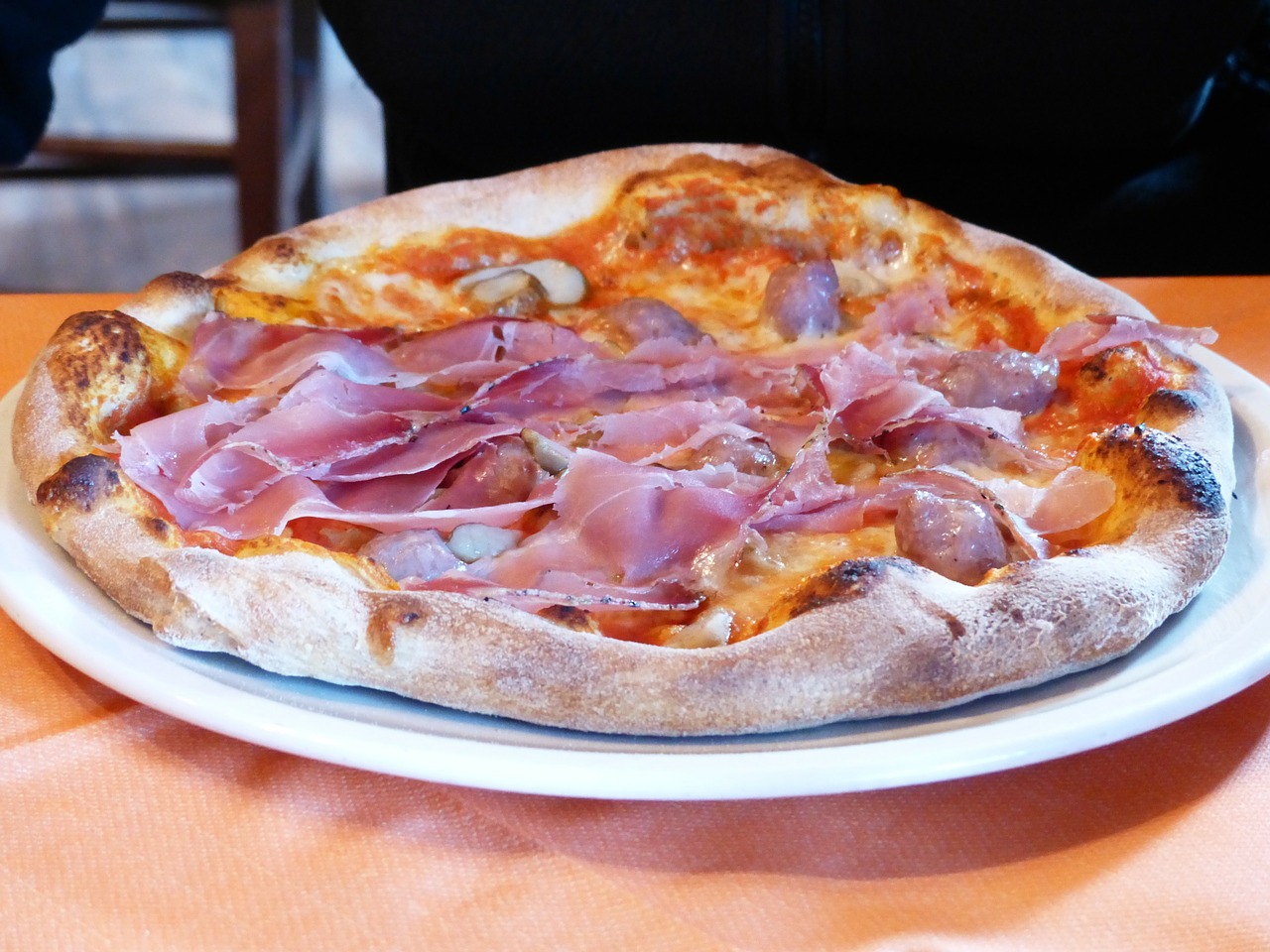This week, we’re looking at the difference between pancetta and prosciutto: similar names, different meats, comparable to ham and bacon. Or Canadian bacon.
- Pancetta: Italian pork belly cured with salt, pepper, and other spices, and air-dried up to four months, tightly rolled in a cylinder
- Prosciutto: salted ham that has been cured by drying, always sliced paper-thin for serving
- Canadian bacon: bacon made from the boned strip of a pork loin
From the definitions, we can see immediately that pancetta is more like bacon, while prosciutto is more like ham – as in, it actually is a ham. Interestingly, Canadian bacon clearly resembles ham, but it is technically bacon (but much leaner).
Both prosciutto and pancetta:
- Are Italian foods.
- Are typically sold in paper-thin slices.
- Are cured.
- Can be used to wrap around other foods, like asparagus.
Pancetta:
- Is made from pork belly (like bacon).
- Is cured, but generally not smoked.
- Has streaks of “creamy colored fat.”*
- Has a mild, subtle flavor.
- Typically needs to be cooked.
- Is often used as flavoring in soups, stews, and sauces.
*Pancetta is fattier than prosciutto, as it comes from a fattier part of the pig.
Prosciutto:
- Is made from the hind leg of a pig (like ham).
- Is “salt-and-air” cured.
- After being cured, is hung and dried for months, or even years.
- Is frequently eaten uncooked.
- Has a rich flavor.
Leaner than “real” bacon, Canadian bacon is derived from pork loin that has been both cured and smoked. In this country, it is sold cooked.
As Canadian bacon is in fact in a type of bacon, prosciutto is a type of ham. Pancetta, though obtained from the same cut of the pig as bacon, is not in fact bacon.
Not confused yet?
The Food Substitutions Bible lists prosciutto as a possible substitute for pancetta, but not the other way around; Canadian bacon can be substituted with pancetta, but not prosciutto.
A small announcement: The usual weekly Food History segment will be posted on Friday instead of Thursday.
